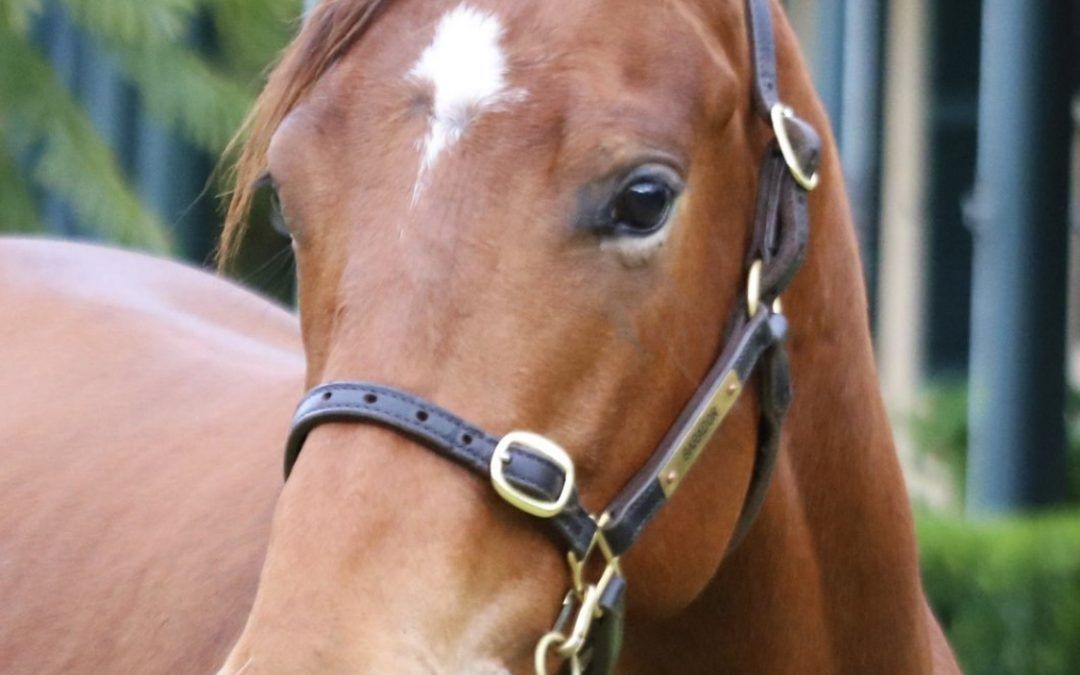There is an air of excitement sweeping through Natalie McCall’s stable as the first group of two-year-old’s continue to make big strides towards beginning their racing journey.
On the back of an outstanding 2019/20 season where the stable enjoyed a winning strike rate of 28% at provincial tracks, Nat is excited to see her new group of stable stars continue to grow by the day. Requiring immense patience, care and a firm hand every now and then, her personal approach to training is essential to how she trains each of her horses, none more so than the two-year-olds.
Join Nat as she shares the journey each of her babies take as they learn what it’s like to be a racehorse.
The Sales & Breaking In
Before even setting foot in the stables, the babies have already endured a long preparation after sales teams prepare them to look their best for the sales.
Each horse already completes plenty of work to ensure they are presented in top-order at the sales, and can then be paraded for hundreds of inspections over the length of the sale, so they all need a bit of time off after.
Once purchased from the sales ring, they go directly to the spelling farm for between two and four weeks, before beginning their journey with the breaker.
“We use John Robbins at Beerwah and couldn’t recommend him highly enough, using the same patient approach that is used in the stable.” Nat gleamed
“First the babies will be taught to accept the bit and learn to yield the pressure of it. The babies are taught on the ground long before anyone hops on their back, and are slowly introduced to the girth which the majority resent early on. Finally, they can start to be ridden. When the horses are transferred to our stables, they don’t know what it is to be a racehorse, but they are equipped with all the tools to learn and have been given a strong foundation.”
Arriving At The Stables
The first steps with the babies revolve around teaching them about the different skills they will need going forward.
From simple things like learning how the walker works, when to stop, when to go and when NOT to turn around! They learn to stand in the wash bay and be tied up, washed and towelled down on their own.
Experiencing stable life for the first time, the young ones can often be very mate hungry so it’s a fine line between keeping them confident and also educating them to be able to function independently.
Characteristics
Although learning the unique characteristics of each horse is one the most enjoyable parts of the job, there is no lack of work especially when it comes to taming the colts.
“They are like cocky teenagers, full of energy, always talking back, always nipping and pestering you. You need to ensure you are very stern with them to ensure they learn their boundaries straight off the bat, otherwise risk them becoming a massive handful fast.”
“The fillies like us ladies are the opposite. Some may be a little timid, a little unsure of things, but as soon as they gain some confidence, think they know everything!” Nat said
Working For The First Time
A very loud, hectic and daunting experience for any young horse, when they enter the training track for the first time it is a whole new world for them. It is vital they can rely back to the skill set the trainer taught them and remember to listen to their rider for guidance and security. Brakes are NOT optional!
“They always work alongside a mate for the first few days, generally an older horse to calm them down. Working alongside the mate shows them everything is okay, it’s not too bad out on the track and is vital towards boosting their confidence. Like people, some horses catch on very quickly, but others take time to get their head around it. This is not always an indicator of which will be the better horses merely a sign of their character. Some just take time!”
They will all have a few short stints in at the track with four to six week breaks in between.
“Once the early runners can be identified, they will then be x-rayed for joint and bone maturity, and pending vet clearance, we start to step up to some fast work. We are currently in this stage right now, there are a couple of early types in which we have our eyes on, but won’t be counting any out.”
“I would say our earliest types are Sacca (Capitalist), Sooblond (Sooboog), and a lovely Snitzel colt. But hey every year there are always surprise packets and they love making a liar out of me!! A very patient process, we ensure that each horse shows us they are absolutely ready to rumble before we push on.”
“The babies get quite tired very quickly so one day you are planning to head to the trials next week, and the next day they have left half their feed and can hardly get out of their own way they are so tired. So off to the paddock they go! As the spring begins to warm up and the babies continue to grow, they are taking massive steps each day and can’t wait for them to see our next group of stable stars hit the ground running.”\
Brodie Nickson
